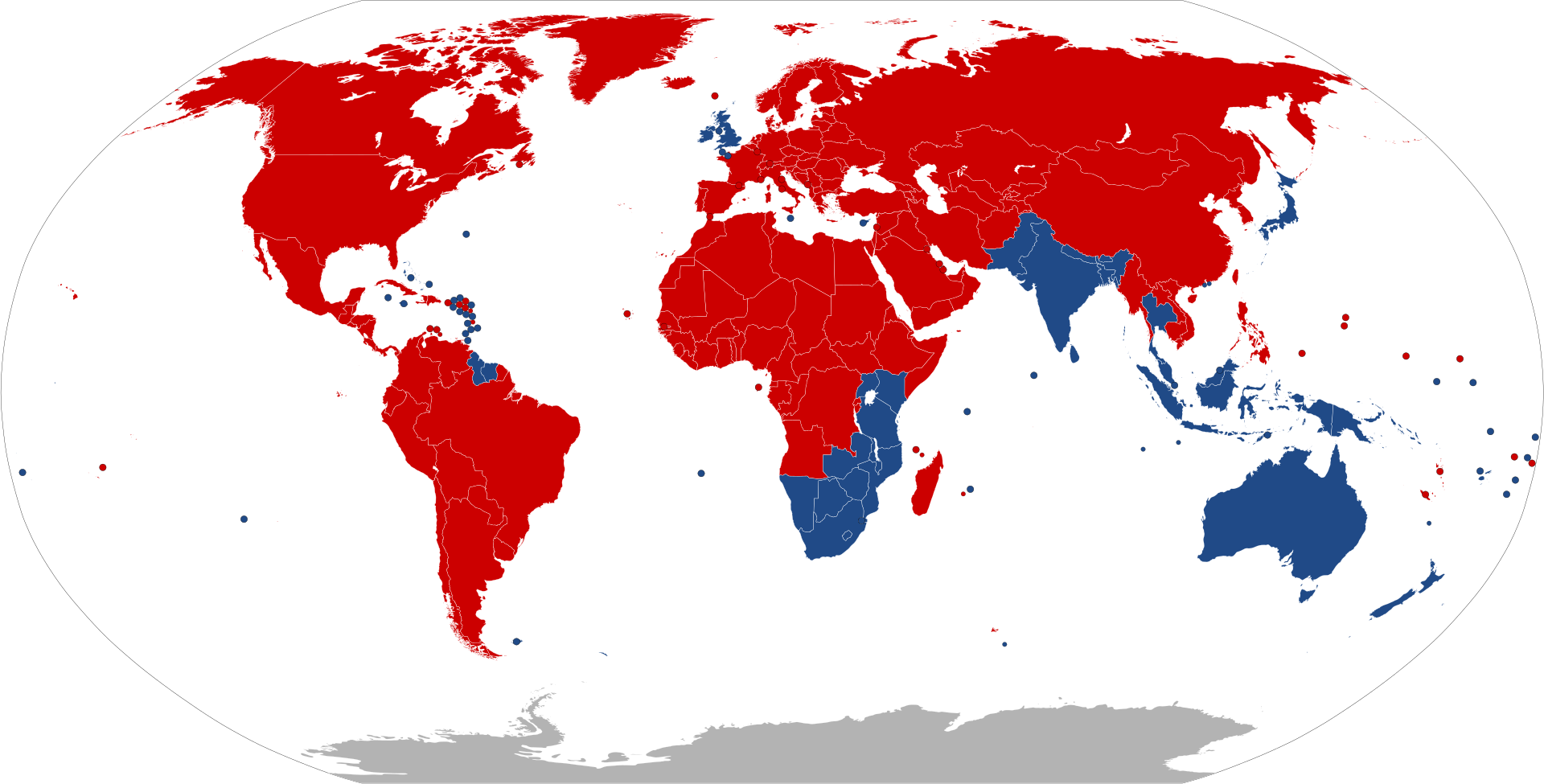There are lots of places in life where there are two valid options. Sometimes there are arguments for both or other times it is just a preference. With fundamental options, it is often better for everyone to agree on one. When driving along the road, it is much easier with everyone driving on the same side as you. Countries internally have picked a side so everyone is consistent driving around, making it much safer. As you can see in this map, nearly all the world has agreed to drive on the right.

Which countries have left and right hand traffic [1]
When you are just walking or even horse and carts the side does not particularly matter and it is just convention. As technology increases, asymmetric infrastructure is built and cars have the steering wheel on one side. The choice becomes increasing solidified and it becomes a much bigger deal to switch. Sweden had "Högertrafikomläggningen" in 1967 where after extensive preparation, they switched from left hand drive to right hand to match their neighbours.
One of the downsides of being in the minority is that it is the opposite to what most tourists are used to. In New Zealand, the highest cause of fatal accidents involving overseas drivers is "Failed to keep left" at over 40% [2].
Sometimes different groups are internally consistent with their usage, but the opposite to other groups. The coordinates 0° 80° is in South America if you treat it as Latitude Longitude or off the coast of Greenland if you treat it as Longitude, Latitude [3] [4]. Even within the same company they can be inconsistent, with Google Maps and Google Earth having opposite formats. A more obscure example is Endianness which is whether the computer stores the most significant byte on the left or right. There are advantages to each, and different groups chose one or the other for their machines. As software became more portable and machines became connected this caused interoperability problems which had to be worked around.
Some choices have become so standard that we forget there were two options. Clockwise has become so synonymous that it is the standard way of describing rotations (Although there is still some disagreement over whether the opposite should be anticlockwise or counterclockwise). The first clocks were built matching the rotation of a northern hemisphere sundial. Now clocks rotating the other way are only made as a novelty. Another standard is the phrase 'lefty loosey, righty tighty'. This only works because common convention has made the right-handed helix thread for screws the default[5].
One niche choice that I have run into in programming is what line to put curly braces on. Usually, the compiler strips out all the whitespace anyway so it is just there for the human. This is something that developers often have Very Strong Opinions about. They will argue passionately for why one is easier to read. Since there is not a definitive answer, it can drag on and result in people coding in their own style. In my experience, it is far better to use your not preferred style and have all the code be consistent amongst the team than get into formatting fights on every commit.
If you find yourself in a situation where your group has two valid options, then it is worth putting in the effort to try to get a consensus. Even if you do not get your own preference, the whole team will gain a lot by being consistent.